MaryAnn Bernal's Blog, page 155
August 20, 2015
Crossrail archaeologists excavate an apparent mass grave at the Bedlam hospital cemetery
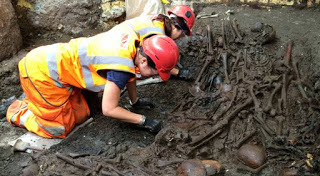 A mass grave of 30 possible bubonic plague victims is being excavated in London at the huge cemetery of Bedlam mental asylum that was discovered while workers were building the Crossrail subway system.
A mass grave of 30 possible bubonic plague victims is being excavated in London at the huge cemetery of Bedlam mental asylum that was discovered while workers were building the Crossrail subway system.Authorities think the people buried in the mass grave may be victims of bubonic or some other plague because unlike many others buried at Bedlam Hospital cemetery, these people appear to have all been buried on the same day.
Jay Carver, the chief archaeologist with Crossrail, said: "This mass burial, so different from the other individual burials found in the Bedlam cemetery, is very likely a reaction to a catastrophic event. We hope this gruesome but exciting find will tell us more about one of London's most notorious killers."
A Crossrail news release said of the mass grave: “A headstone found nearby was marked ‘1665,’ and the fact the individuals appear to have been buried on the same day, suggest they were victims of the Great Plague. The thin wooden coffins have collapsed and rotted, giving the appearance of a slumped and distorted mass grave. The skeletons will now be analyzed by osteologists from Museum of London Archaeology (MOLA), and scientific tests may reveal if bubonic plague or some other pestilence was the cause of death.”
The graveyard, which dates back to 1569 and operated until at least the late 1730s, was found in 2013 during excavations to construct the 13-mile high-speed Crossrail tunnel under Central London.
 Adult skull of the Roman period, found at Liverpool Street (
Crossrail photo
)Officials building the huge cross-London underground railway are publishing the identity of some of the thousands of people buried 400 to 500 years ago in Bedlam cemetery. After researching parish records, the Crossrail project has released a fascinating database online giving names, occupations and causes of death.
Adult skull of the Roman period, found at Liverpool Street (
Crossrail photo
)Officials building the huge cross-London underground railway are publishing the identity of some of the thousands of people buried 400 to 500 years ago in Bedlam cemetery. After researching parish records, the Crossrail project has released a fascinating database online giving names, occupations and causes of death.The database of names, identities and occupations of about 5,000 people who were buried there can be read here: http://www.crossrail.co.uk/bedlamregister. It includes details about who lived in London and what they did. The database reveals the case of a woman who died October 17, 1581:
'a poore woman, which dyed in the streat, of the plague, what she was or from where she came, we know not. She is buryed in the New Churchyard, as we calle it.'Another woman, Annis Johnson, died of sore legs, the Bedlam cemetery register says:
'who had lyen at Goodwyfe Cooleman as she confessed iii weekes, was brought into the cage an theire died. Being of the age of xxx yeares.' Wife of Thomas Johnson of Edmonton'The remains of people buried in Bedlam burial ground, which may number 30,000, were mainly from the lower echelons of society and could not afford proper burial or were interred there when churches were overwhelmed by deaths from the Black Plague. Some buried there did not adhere to a religious faith and so were not buried in regular churchyard graves.
Bedlam burial ground was the first cemetery in London during the Christian era not affiliated with a local church. The people who managed the burial ground did not keep records of who was buried. But some parishes who had their deceased members buried there did keep records, which are now held at the London Metropolitan archives.
Established in 1247, the notorious Bethlem (“Bedlam”) Royal Hospital was the first dedicated psychiatric institution in Europe and possibly the most famous specialist facility for care and control of the mentally ill, so much so that the word bedlam has long been synonymous with madness and chaos.
About 3,500 skeletons have been disinterred so far and are being examined scientifically. After the work is complete the bodies will be reburied in consecrated ground.
“This research is a window into one of the most turbulent periods of London’s past,” Carver said earlier in 2015. “These people lived through civil wars, the Restoration, Shakespeare’s plays, the birth of modern industry, plague and the Great Fire. It is a real privilege to be able to use Europe’s largest construction project to uncover more knowledge about this fascinating period of history.”
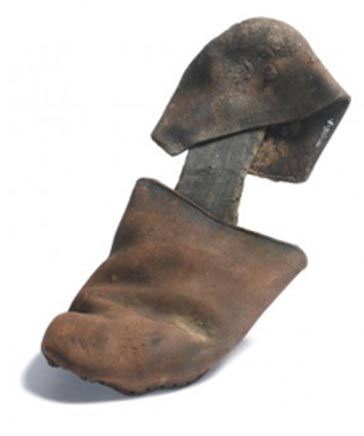 Slip-on flat shoe of the 16th century found by Crossrail archaeologists (
Crossrail photo
)Archaeologists have found more than 10,000 artifacts from a span of 55 million years at Crossrail's 40 London construction sites.
Slip-on flat shoe of the 16th century found by Crossrail archaeologists (
Crossrail photo
)Archaeologists have found more than 10,000 artifacts from a span of 55 million years at Crossrail's 40 London construction sites.Featured image: Crossrail archaeologists excavate an apparent mass grave at the Bedlam hospital cemetery ( Crossrail photo )
By Mark Miller
Ancient Origins
Published on August 20, 2015 07:01
History Trivia - Battle of Brémule
August 20
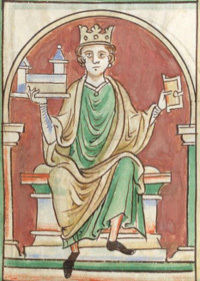 1119 Henry I defeated an invasion of his Norman lands by Louis VI (the Fat), King of France, at the Battle of Brémule. The defeat effectively crippled the baron's rebellion and led to King Louis having to accept William Adelin as Duke of Normandy. William was officially invested with the duchy in 1120, even though King Louis continued to support William Clito's claim to the honour. The contemporary Norman historian Orderic Vitalis noted that the quality of their armour and the chivalrous preference for capturing (and presumably ransoming) the enemy meant that of the 900 knights engaged in ‘the battle of the two kings’ only three were killed.
1119 Henry I defeated an invasion of his Norman lands by Louis VI (the Fat), King of France, at the Battle of Brémule. The defeat effectively crippled the baron's rebellion and led to King Louis having to accept William Adelin as Duke of Normandy. William was officially invested with the duchy in 1120, even though King Louis continued to support William Clito's claim to the honour. The contemporary Norman historian Orderic Vitalis noted that the quality of their armour and the chivalrous preference for capturing (and presumably ransoming) the enemy meant that of the 900 knights engaged in ‘the battle of the two kings’ only three were killed.
 1119 Henry I defeated an invasion of his Norman lands by Louis VI (the Fat), King of France, at the Battle of Brémule. The defeat effectively crippled the baron's rebellion and led to King Louis having to accept William Adelin as Duke of Normandy. William was officially invested with the duchy in 1120, even though King Louis continued to support William Clito's claim to the honour. The contemporary Norman historian Orderic Vitalis noted that the quality of their armour and the chivalrous preference for capturing (and presumably ransoming) the enemy meant that of the 900 knights engaged in ‘the battle of the two kings’ only three were killed.
1119 Henry I defeated an invasion of his Norman lands by Louis VI (the Fat), King of France, at the Battle of Brémule. The defeat effectively crippled the baron's rebellion and led to King Louis having to accept William Adelin as Duke of Normandy. William was officially invested with the duchy in 1120, even though King Louis continued to support William Clito's claim to the honour. The contemporary Norman historian Orderic Vitalis noted that the quality of their armour and the chivalrous preference for capturing (and presumably ransoming) the enemy meant that of the 900 knights engaged in ‘the battle of the two kings’ only three were killed.
Published on August 20, 2015 01:30
August 19, 2015
Sam’s historical recipe corner: Homity pie
 Hearty and warming homity pies were popular among land girls during the Second World War. (Credit: Sam Nott)
Hearty and warming homity pies were popular among land girls during the Second World War. (Credit: Sam Nott) In every issue of BBC History Magazine, picture editor Sam Nott brings you a recipe from the past. In this article, Sam recreates homity pie - a hearty, vegetarian dish popular during the Second World War.
We don’t know where the name for homity pie originates from but the dish was popular with land girls during the Second World War. As well as unrationed items, the recipe also includes rationed foods like cheese, eggs and butter – the original recipe would have used these frugally. Nowadays we don’t have to be so sparing with the cheese and butter, which only make it even tastier.
Ingredients• 4–5 medium potatoes
• 2–3 medium leeks
• 1 eating-apple, cored and chopped into small cubes
• 2 cloves garlic (chopped finely)
• 1 egg
• 3oz butter or margarine, plus more for frying
• 6oz cheese
• fresh or dried thyme
• salt and pepper (to taste)
• shortcrust pastry made with 6oz flour and 3oz butter or margarine
Method1) Make the shortcrust pastry using plain flour and 3oz butter/margarine. Rub the latter into the flour to make breadcrumbs and bind together with some water to make a pliable dough.
2) Roll the dough into a greased pie dish and blind bake in the oven at 200°C/gas mark 6, for about 10 mins.
3) Chop potatoes into small cubes (skins on) and simmer in boiling water until tender.
4) Fry chopped leeks and garlic in butter/margarine until tender. Add apple and thyme.
5) Drain potatoes and add to leeks. Stir in one whisked egg, more butter/margarine and 2oz of grated cheese. Season with salt and pepper.
6) Fill the pie dish with the mixture and add 4oz of grated cheese on top.
7) Cook in an oven at 220°C/gas mark 7 until the top is browned.
8) Leave to cool before eating.
Difficulty: 3/10
BBC History Magazine verdict: “Wholesome and delicious”.
Recipe courtesy of The 1940's Experiment.
This article was first published in the March 2015 issue of BBC History Magazine
History Extra
Published on August 19, 2015 08:13
History Trivia - The Battle of Knockdoe
19th of August 1504 - The Battle of Knockdoe
Loud blares the trumpet, the field is set. Loud blares the trumpet, the foe men are met. Steep slopes the hill, at Knockdoe in the West. There stood in Battle, the South at its best. Hi Manny O'Kelly, with the Burkes is at War, and Clanrickard has gathered his friends from afar. Kildare he advances like the fox that doth stalk, O'Kelly sweeps down with the speed of a hawk. Loud sounds the trumpet, the sunset is fair. Hi Manny triumphant. The Earl of Kildare.
(Local folklore has it that the above poem was found in the pocket of a slain soldier.)
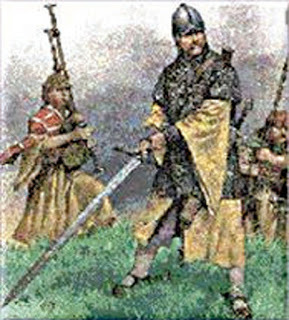
Loud blares the trumpet, the field is set. Loud blares the trumpet, the foe men are met. Steep slopes the hill, at Knockdoe in the West. There stood in Battle, the South at its best. Hi Manny O'Kelly, with the Burkes is at War, and Clanrickard has gathered his friends from afar. Kildare he advances like the fox that doth stalk, O'Kelly sweeps down with the speed of a hawk. Loud sounds the trumpet, the sunset is fair. Hi Manny triumphant. The Earl of Kildare.
(Local folklore has it that the above poem was found in the pocket of a slain soldier.)

Published on August 19, 2015 01:30
August 18, 2015
Book Launch - Julius Caesar De Bello Gallico The War in Gaul: A Storyteller's version Kindle Edition by Sebastian Lockwood
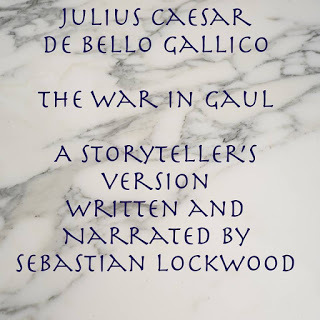
Hail Caesar! This is the Kindle version, Audible to follow soon. Sebastian Lockwood is The Person to bring this to us. Caesar was a master leader, planner and storyteller. Stay tuned for the audio that goes with this great Reality story. Follow on Facebook Lumen Arts Audio for updates.
Amazon link
Listen to Sebastian on Soundcloud
Traveling bard, Sebastian Lockwood narrates The Briton and the Dane
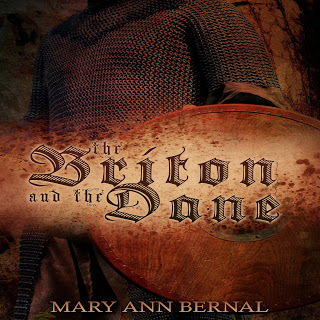
The Briton and the Dane is a story of love, betrayal, intrigue and warfare taking place in a realm of mystery and darkness, set in ninth century England when the bloodthirsty Vikings raped and pillaged their way across the length and the breadth of the windswept lands.
Purchase on Audible
Purchase on iTunes
Published on August 18, 2015 09:15
History Trivia - King Alarik I, King of the Visigoths, occupies Rome
August 18
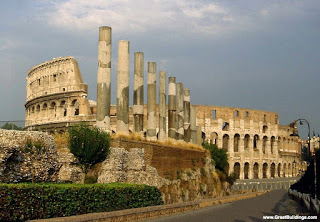
293 BC The oldest known Roman temple to Venus was founded, starting the institution of Vinalia Rustica (festival sacred to Jupiter).
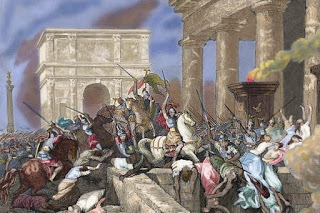
410 King Alarik I, King of the Visigoths, occupied and plundered Rome, which marked a decisive event in the decline of the Roman Empire.

1201 The city of Riga(Baltics) was founded, and became a thriving center of Viking trade.

293 BC The oldest known Roman temple to Venus was founded, starting the institution of Vinalia Rustica (festival sacred to Jupiter).

410 King Alarik I, King of the Visigoths, occupied and plundered Rome, which marked a decisive event in the decline of the Roman Empire.

1201 The city of Riga(Baltics) was founded, and became a thriving center of Viking trade.
Published on August 18, 2015 02:00
August 17, 2015
History Trivia - The Battle of the Gates of Trajan - Byzantine army destroyed
August 17
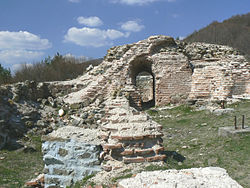
986 A Byzantine army was destroyed in the pass of Trajan's Gate by the Bulgarians under the Comitopuli Samuel and Aron. The Byzantine emperor Basil II narrowly escaped. The Battle of the Gates of Trajan only postponed the fall of Bulgaria, which occurred in 1018.

1498 - Cardinal Cesare Borgia, son of Pope Alexander VI and Vannozza dei Cattanei, renounced his vows and office so that he might marry a French princess.
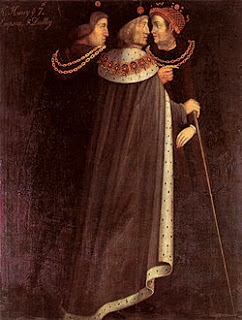
1510 Edmund Dudley was executed for treason under Henry VIII. While waiting for his execution he wrote The Tree of Commonwealth, a treatise in support of absolute monarchy; Dudley hoped to gain the favor of Henry VIII, but there is no evidence that Henry ever saw the document.

986 A Byzantine army was destroyed in the pass of Trajan's Gate by the Bulgarians under the Comitopuli Samuel and Aron. The Byzantine emperor Basil II narrowly escaped. The Battle of the Gates of Trajan only postponed the fall of Bulgaria, which occurred in 1018.

1498 - Cardinal Cesare Borgia, son of Pope Alexander VI and Vannozza dei Cattanei, renounced his vows and office so that he might marry a French princess.

1510 Edmund Dudley was executed for treason under Henry VIII. While waiting for his execution he wrote The Tree of Commonwealth, a treatise in support of absolute monarchy; Dudley hoped to gain the favor of Henry VIII, but there is no evidence that Henry ever saw the document.
Published on August 17, 2015 01:30
August 16, 2015
Scribbler Tales Volume Five available on iTunes
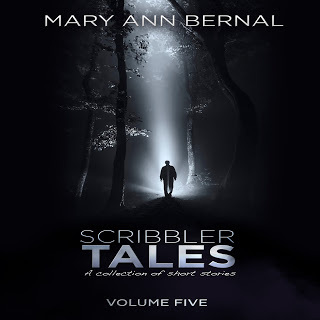
Written by: Mary Ann BernalNarrated by: Roberto ScarlatoLength: 1 hr and 12 mins
In her quest for immortality, Lilly considers a Satanic covenant before the portal closes on All Hallows' Eve in "Bloodlust". When Felicity meets exotic Seth on a flight to Luxor, her fairy-tale vacation is threatened by tomb robbers in "Illusion". "Manhunt" finds Tami and Mick suspecting the newest member of their team while planning one final heist at the Diamond Exchange. Dr. Brenda Lancaster must develop a cure for a mutated pathogen before mankind becomes extinct in "Pandemic".
iTunes
Published on August 16, 2015 02:00
History Trivia - Battle of the Spurs - French routed
August 16
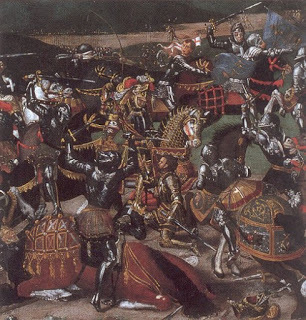
1513 The Battle of Guinegate (near Saint-Omer in the Pas de Calais, France)or Battle of the Spurs: As part of the Holy League under the on-going Italian Wars, English and Imperial troops under Henry VIII and Maximilian I surprised and routed a body of French cavalry under Jacques de La Palice. The English army was provided by Cardinal Thomas Wolsey and combined several different types of martial forces, and included cavalry, artillery, infantry and longbows using hardened steel arrows designed to penetrate armor more effectively. The French forces were mostly companies of gendarmes and pikemen, with some other mixed forces as well. The battle became known as the "Battle of the Spurs" because of the haste of the French horsemen to leave the battlefield.

1513 The Battle of Guinegate (near Saint-Omer in the Pas de Calais, France)or Battle of the Spurs: As part of the Holy League under the on-going Italian Wars, English and Imperial troops under Henry VIII and Maximilian I surprised and routed a body of French cavalry under Jacques de La Palice. The English army was provided by Cardinal Thomas Wolsey and combined several different types of martial forces, and included cavalry, artillery, infantry and longbows using hardened steel arrows designed to penetrate armor more effectively. The French forces were mostly companies of gendarmes and pikemen, with some other mixed forces as well. The battle became known as the "Battle of the Spurs" because of the haste of the French horsemen to leave the battlefield.
Published on August 16, 2015 01:30
August 15, 2015
Beast from the Deep: Rare wooden figurehead salvaged from historic Danish shipwreck
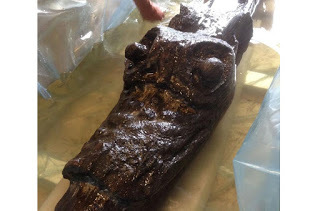
A wooden figurehead depicting a doglike figure or monster from a historic 15th century Danish ship has been pulled from Swedish waters. This is one of the oldest known preserved wooden carvings of its kind in the world. Wood disintegrates relatively quickly unless it is preserved by submersion.
The ship the figurehead is believed to have come from was the warship Gribshunden, which was possibly a flagship built under King Hans of Denmark, who ruled from 1481 to 1513. The ship, which had been carrying Hans (or King John) to Sweden on a 1495 diplomatic mission, is believed to have burned before arrival. Hans, who watched the ship burn from a nearby boat, called off the mission. In later years war ensued between Denmark and Sweden, which wanted independence from the Kalmar Union that united Denmark, Sweden and Norway. Historians wonder if the diplomatic mission had succeeded whether war could have been avoided later.
Charcoal has been found at the site of the shipwreck, lending further credence to the belief that this wreck is in fact the Gribshunden. The shipwreck, which lies in waters off the south coast of Sweden, is considered vitally important in the history of naval warfare.
 Lead shot found amidships of the Gribshunden wreck; these may be among the first artillery lead shot meant for use in naval warfare. (Photo by Johan Ronnby)The Swedish waters where divers are now working to salvage the Gribshunden were considered Danish waters in the 15th century. The shipwreck, which was discovered by sport divers in the 1970s, has deep historical significance, according to the blog Combat Archaeology.
Lead shot found amidships of the Gribshunden wreck; these may be among the first artillery lead shot meant for use in naval warfare. (Photo by Johan Ronnby)The Swedish waters where divers are now working to salvage the Gribshunden were considered Danish waters in the 15th century. The shipwreck, which was discovered by sport divers in the 1970s, has deep historical significance, according to the blog Combat Archaeology.“As can be gained from the above, Gribshunden is an extraordinarily unique find. Future studies of the site will doubtlessly make significant contributions to knowledge of Late Medieval life, especially in relation to seafaring and naval warfare,” the blog states.
This YouTube videos shows Professor Jon Adams working underwater at the Gribshunden site.The ship was 35 meters (114 feet) from bow to stern and had a beam of at least 7.5 meters (24.6 feet) and had forecastle and aftcastle. It was an early type of ship constructed using the carvel method in which planks of the hull were laid flush and edge to edge instead of overlapping in the clinker type construction. In addition to the figurehead, divers have found three lead shot of 5 cm (about 2 inches) in diameter and carriages on the hull for wrought iron guns. Crossbow bolts also have been found at the shipwreck in previous years.
The significance of the military hardware is that this ship is right at or near the beginning of a new type of warfare—blasting away with artillery from a distance instead of boarding and doing hand-to-hand combat, which had been done from ancient times.
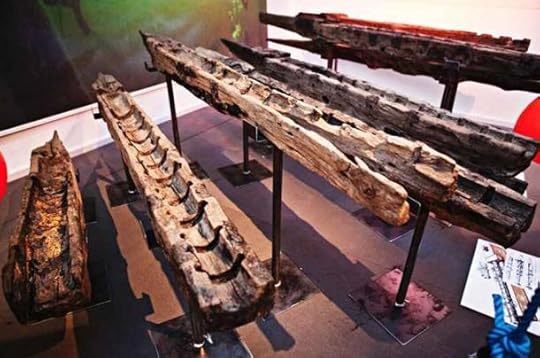 Gun carriages from the Gribshunden in Blekinge Museum (Photo by Mattias Mattison)“The material, therefore, is a particularly instructive topic of investigation for the study of the development of naval warfare, offering an insight into the navy’s first steps towards extricating itself from the medieval bind of determining naval battles by boarding action,” says Combat Archaeology.
Gun carriages from the Gribshunden in Blekinge Museum (Photo by Mattias Mattison)“The material, therefore, is a particularly instructive topic of investigation for the study of the development of naval warfare, offering an insight into the navy’s first steps towards extricating itself from the medieval bind of determining naval battles by boarding action,” says Combat Archaeology.“The focal shift towards naval heavy ordnance fire is an important stage in the history of warfare, for out of it emerged purely impersonal warfare. The violence, now generated in a detached and distant way, was something new, having interesting psychological repercussions that are known to result in that the violence becomes more extreme. Gribshunden, when coupled and contrasted to other wrecks – such as Mary Rose (1545), Elefanten (1564), Mars (1564), Vasa (1628) and Kronan (1676) – has the potential to reveal incredible insights concerning the overall trajectory of the development of warfare at sea, not least the underlying social institutions that both governed and were influenced by these technological advancements.”Marcus Sandekejer of Blekinge museum, where the figurehead will be displayed later in August 2015, told TheLocal.dk: "This figurehead is probably the only one left from a 15th century ship in the world. Five hundred twenty years under water and in such a great condition!"
The wooden figurehead is in a bath of sugar water to remove salt, which could corrode it now that it has been salvaged.
"After that, we will look at other ways of keeping it well maintained for the longer term,” he said. “We have been working with top archaeologists who have worked with other big preservations such as the Kronan ship in Kalmar.”
Featured image: The figurehead of the Gribshunden resembles a monster or dog. ( Blekinge Museum photo )
By Mark Miller
Ancient Origins
Published on August 15, 2015 18:14



